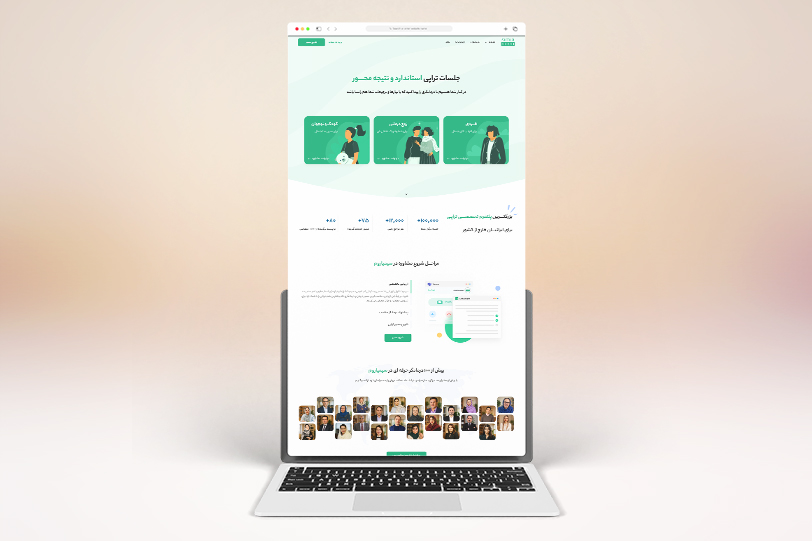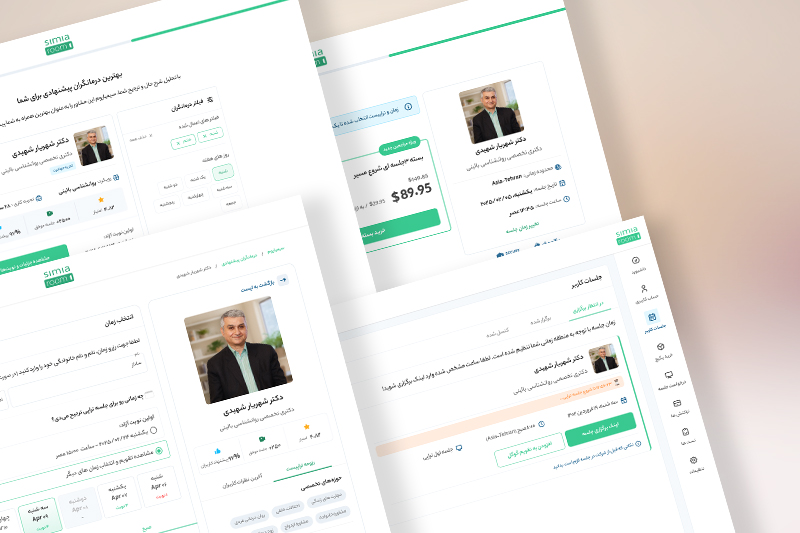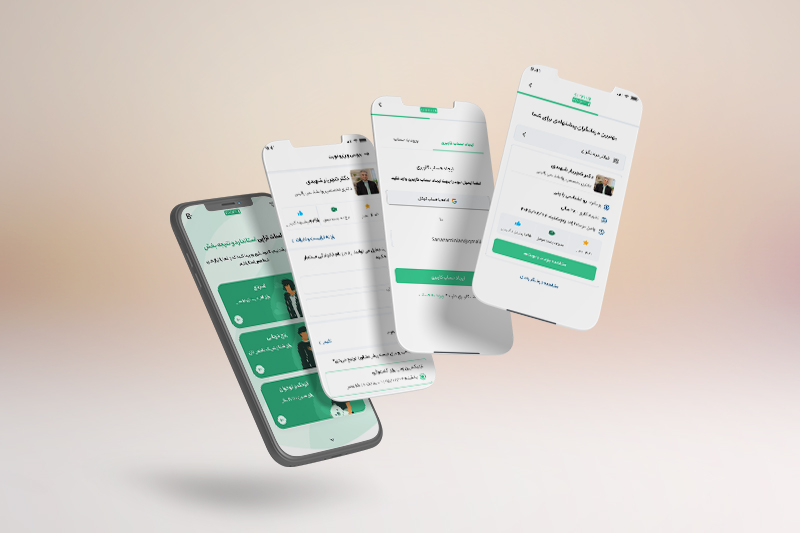Simiaroom Project
Website
Overview of project
Description
Simiaroom is a digital platform providing online psychological therapy services to Iranians living abroad.
As the sole product designer, I was responsible for the end-to-end redesign of the booking experience, from user flow optimization to final UI delivery.
The project’s main objective was to increase conversion rates while maintaining the emotional integrity and trustworthiness essential for mental health products.
I led the initiative to reimagine the booking journey, applying a human-centered design approach to balance usability, empathy, and credibility.
The redesign covered both desktop and PWA experiences, ensuring a consistent visual system, calm tone of voice, and optimized accessibility across all devices.
-
Start Date:
Aug 2025 -
Final Date:
Oct 2024 -
Status:
Completed -
Company:
Simiaroom -
Location:
Tehran-Iran
Problem statements
- Low Conversion Funnel Efficiency: Only 0.8% of users completed the booking flow due to unclear information hierarchy and lack of perceived guidance.
- Trust & Credibility Gap: Users hesitated to commit financially because of uncertainty around therapist verification and data privacy.
- Operational Inefficiency: Heavy reliance on pre-consultation calls increased support workload and extended decision-making time.
- Fragmented UX Flow: Disconnected touchpoints created cognitive friction and drop-offs during critical stages.
- Emotional Disconnect: The existing interface lacked emotional resonance — no warmth, empathy, or reassurance for vulnerable users.
What we did
- Journey Re-architecture: Reconstructed the end-to-end booking funnel using task-flow analysis to minimize friction and reduce cognitive load.
- Information Architecture Optimization: Simplified navigation and surfaced critical information earlier in the flow to improve decision-making confidence.
- Trust-Centered Design System: Introduced verified therapist badges, transparent pricing modules, and clear content hierarchy to strengthen credibility.
- UX Writing Overhaul: Reframed microcopy to convey empathy and psychological safety, creating a reassuring conversational tone throughout the product.
- Visual Language Redesign: Developed a calm, minimal interface emphasizing whitespace, muted tones, and legible typography aligned with emotional accessibility.
- Data-Informed Iteration: Post-launch monitoring through Microsoft Clarity helped identify behavioral drop-offs and validate design hypotheses.
Achievements
- Conversion Rate Optimization: Achieved a measurable 60% increase in conversion rate, validating the effectiveness of the new flow.
- Reduced Human Dependency: Decreased the need for pre-consultation support by enabling users to self-navigate therapist selection confidently.
- Enhanced Brand Trust: Significant improvement in qualitative feedback from both customer service reports and user satisfaction surveys.
- Operational Cost Reduction: Lower support involvement directly reduced overhead in handling booking-related queries.
- Emotional UX Impact: The platform now evokes calmness, clarity, and confidence — key emotional drivers for users seeking therapy.
- Designing for mental health services requires psychological empathy, ethical UX practices, and trust-centered interaction design. Through this project, I learned how subtle shifts in tone, hierarchy, and flow logic can drastically change user perception and emotional comfort. Balancing conversion efficiency with emotional sensitivity became the central design principle guiding every decision.





